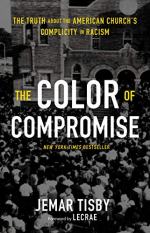|
This section contains 904 words (approx. 3 pages at 400 words per page) |

|
Birmingham, Alabama
Tisby references the civil unrest in Birmingham, Alabama in 1963 on the opening pages of the text. Sixteenth Street Baptist Church, located in Birmingham, was the cite for a historic bombing, which resulted in the deaths of four young black girls. Tisby cites this event in order to illustrate the range of responses from black and white Christians. While some, including lawyer Charles Morgan, held that the bombing was the fault of everyone who had failed to condemn racism, many others disagreed. Tisby uses the climate in Birmingham during the 1960s to open his conversation in Chapter 1.
The Middle Passage
The middle passage refers to the transcontinental transport of kidnapped Africans from their home nations to the Americas. The period in time was defined by atrocities against black lives and bodies. To expose the horrors of the middle passage, Tisby cites emancipated slave Olaudah Equiano's 1789 autobiography. In...
|
This section contains 904 words (approx. 3 pages at 400 words per page) |

|




